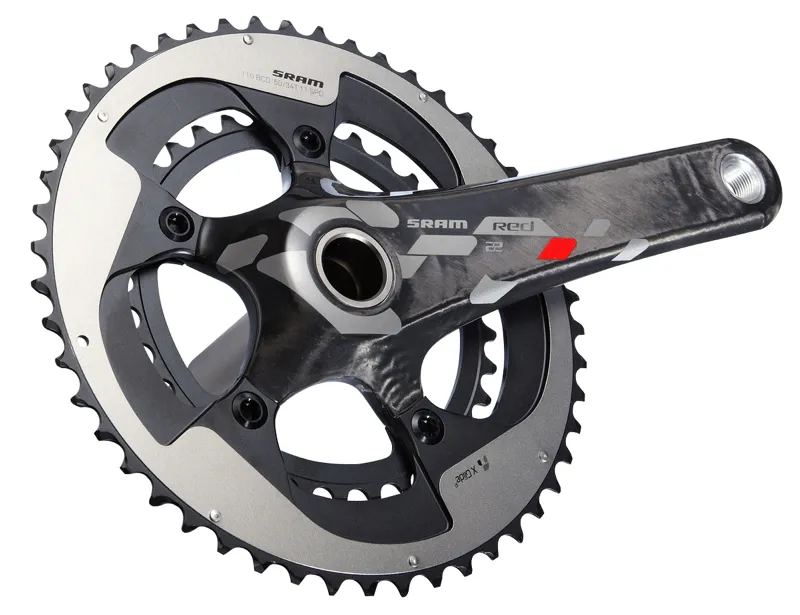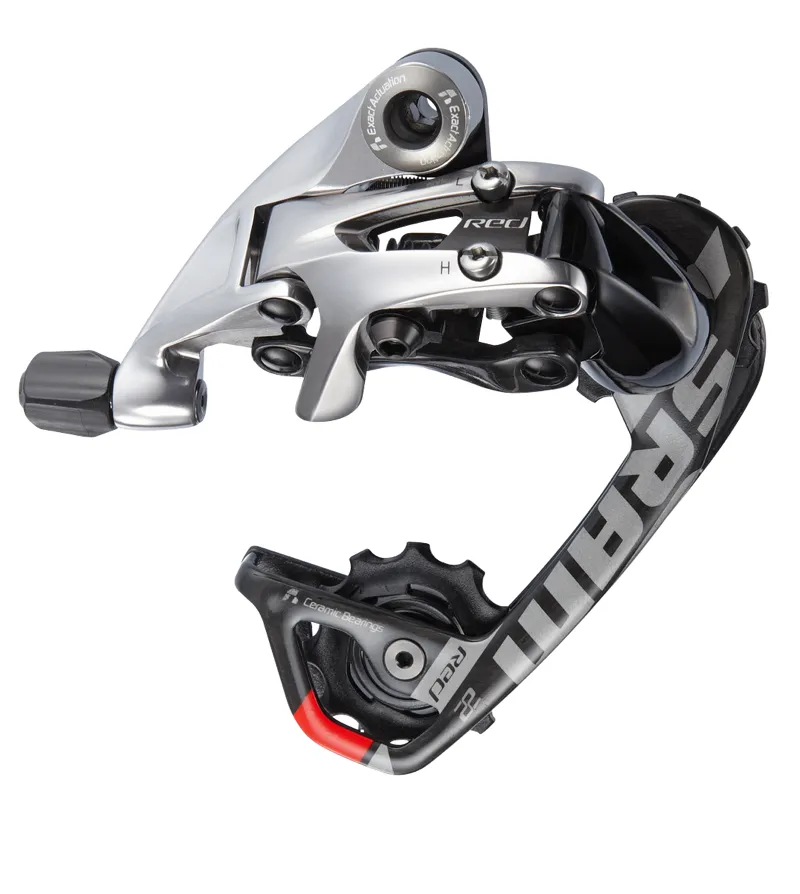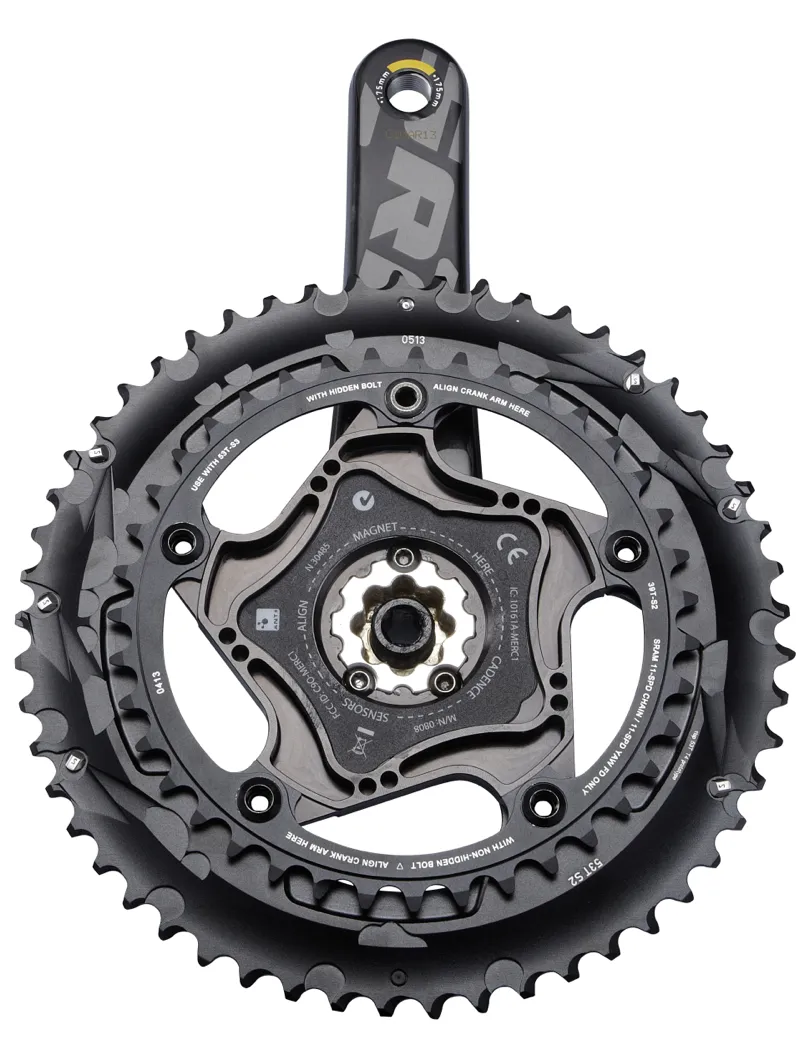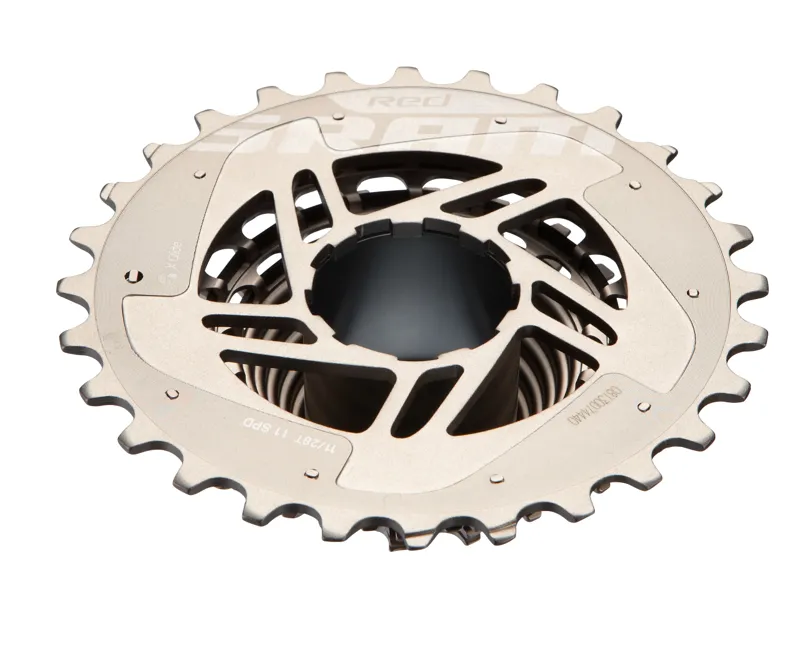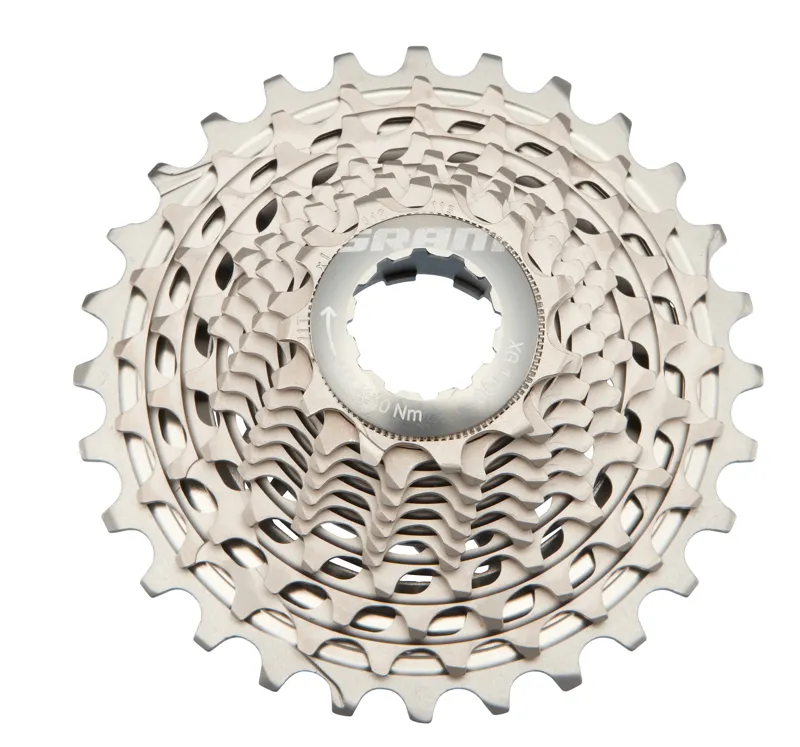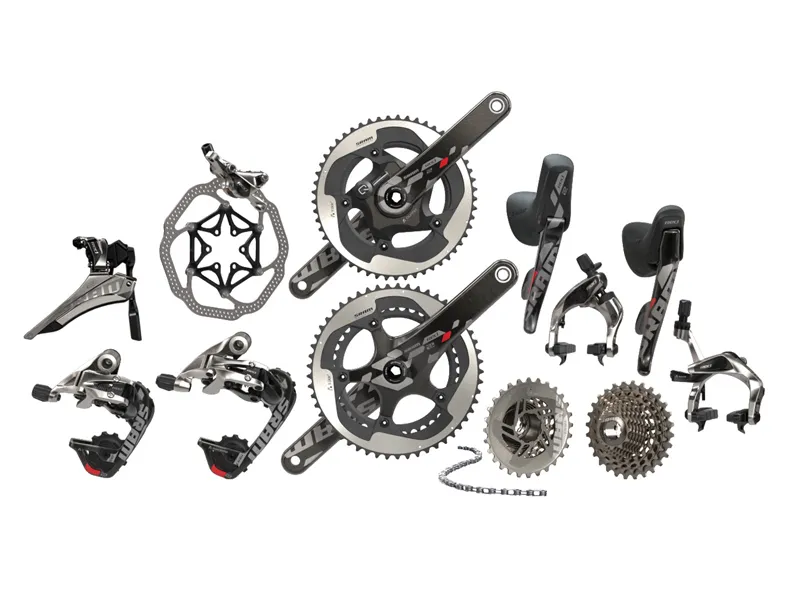SRAM Red 22 is lighter original Red at 1741g, it's quieter too and, for a top-end 11-speed groupset, it won’t break the bank. Plus, you can get an integrated power meter. What do you say to that, Italy and Japan?
The SRAM Red 22 road group has three braking options: standard mechanical plus hydraulic rim and hydraulic disc brakes. Here we take a look at the mechanical option, which beats out Shimano’s Dura-Ace 9000 and Campagnolo’s Super Record on both weight and — in most markets — price among 11-speed mechanical groups.
Compared to the SRAM Red 2012 group, the main change is pretty straightforward: it’s 11-speed. While the Red 22 derailleurs, cranks and chain have been calibrated for 11-speed and given a cosmetic lift, the fundamental designs are the same. But since even Red 2012 is relatively new, it’s worth noting some important changes since the previous Red group.
With Red 22, SRAM has the best value top-end 11-speed group on the market — at least, in most markets. A complete group with a GXP crankset comes in at 1,741g and £2,120 /$2,618. Note that pricing is set higher in the UK than in the US or in Europe. For example, a straight conversion from US pricing would be £1,705. Based on past global trends, however, complete bikes with Red 22 should come in lower than Dura-Ace or Super Record when the group becomes available in July.
Related reading
- SRAM Red 22 11-speed hydraulic, mechanical group: Full details
- SRAM Red 22 Hydraulic Rim groupset: First ride review
- SRAM Red 22 Hydraulic Disc groupset: First ride review
- Hydraulic road brakes: What's the point?
- UCI open-minded about disc brakes for pro peloton
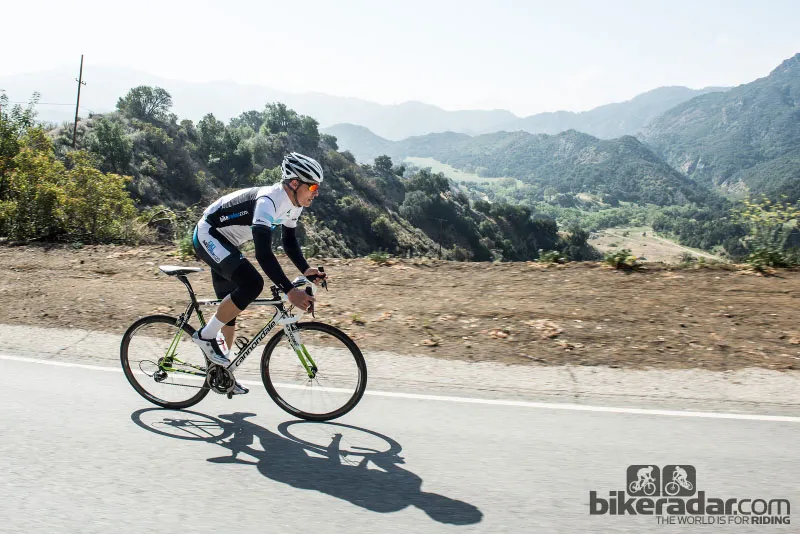
Shifting: Great performance, finicky front-derailleur set-up
For those not familiar with DoubleTap, here’s a quick primer. While Shimano and Campagnolo use two separate levers (or buttons) for up and down shifts, SRAM uses a single lever for what the company calls DoubleTap shifting. A short inward push triggers the derailleur to move the chain onto a smaller cog or chain ring. A longer inward push triggers movement in the other direction. Audible and tactile feedback clearly differentiates what is happening. And you can upshift up to three gears at a time.
Red 2012 ushered in the Yaw front derailleur, which pivots slightly in addition to the traditional lateral movement that moves the chain between chain rings. SRAM did this to eliminate the need to trim the front derailleur (which means moving the derailleur slightly to prevent the chain rubbing against the derailleur when using extreme ends of the cassette). So, instead of having multiple front derailleur positions controlled by the left shifter, you just have two: small ring and big ring.
A modified version of the Yaw derailleur in Red 22 allows the use of the full width of the cassette without trimming. When perfectly set up, it’s a simple and very user-friendly experience. There’s no more guessing, looking down or listening to see if you need to trim the derailleur or change rings. You just shift to suit your legs.
However, the Yaw derailleur is extremely finicky to set up. And when not perfectly set, you will get the chain rub SRAM purports the system eliminates. On our few test rides with other editors and SRAM personnel, we heard at least two bikes with chain rub when cross-chained. As all the bikes were newly set up some allowances could be made, but it still underscores the delicate nature of the Yaw set-up.

A few big positives jump out about the shifting. For one, the front derailleur is considerably more powerful than early Red iterations. Thanks to in part to refined ramping on the chain rings, shifting up into the big ring is a quick and smooth operation, even under moderate power.
Also, the shift paddles are wider (the same as Red 2012), which combines with the auditory and tactile clicks for a nice, positive feel. When riding with cold fingers, or bumping over rough roads, having just one big paddle to search for and operate is welcome simplicity.

Shifting at the rear derailleur is quick, crisp and now quieter. Early SRAM Red featured a one-piece, hollowed-out cassette with a solid backing that looked cool but functioned as a megaphone, amplifying a noisy drivetrain. As of Red 2012 and now with Red 22, the cassette has a more open back and elastomer rings between each cog, quieting operations significantly.
Red 22 also has the new ergonomic hood shape from Red 2012, with a comfortable, flat hood and a more substantial knob than prior Red.
You can adjust the reach of the brake lever and shift lever independently. (Reach is the distance from the handlebar to the lever.)
Braking: Ramping up the power
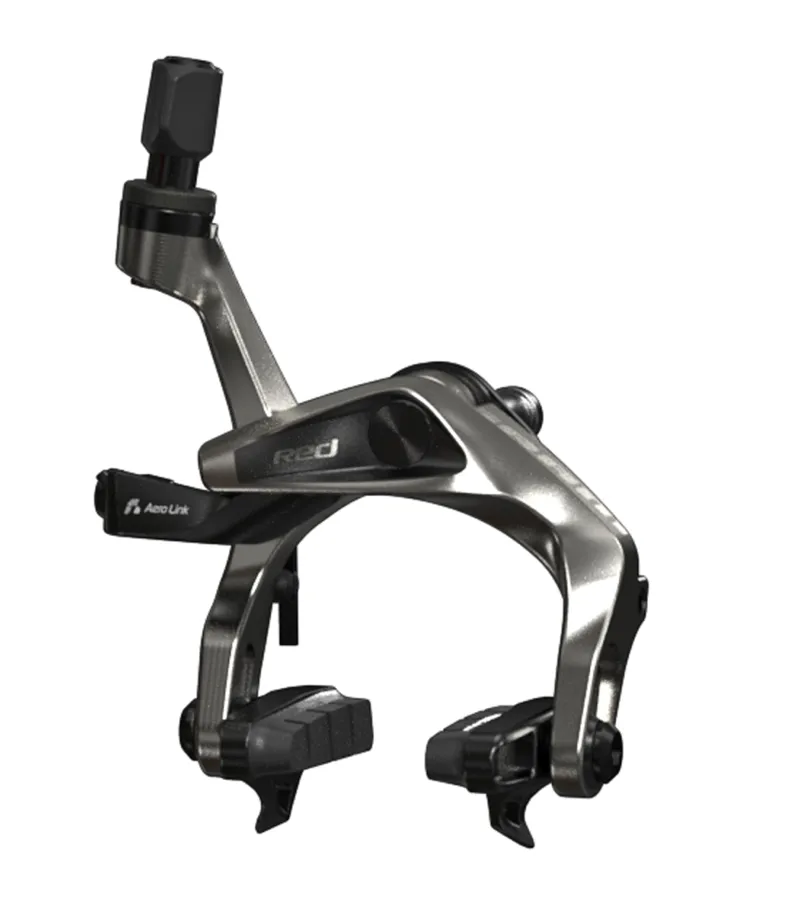
SRAM stepped up its braking game with Red 2012, and the brake lever ratio and the calipers themselves carry over unchanged for Red 22. Power ramps up towards the end of the stroke, which we like. Previous Red groups had noticeably weaker brakes than Shimano or Campagnolo, but SRAM has now caught up.
We only had the opportunity to ride a single set of wheels (Zipp 202) with a single set of pads (Platinum Pro), so take our feedback here for what it is. As we have been extremely impressed with the braking qualities of the new 202 with the Platinum Pro (read our 4.5-star review of the Zipp 202 clinchers here), this combination on Red 22 certainly stacked the deck for good brake performance.
Cranks: So many options, including power
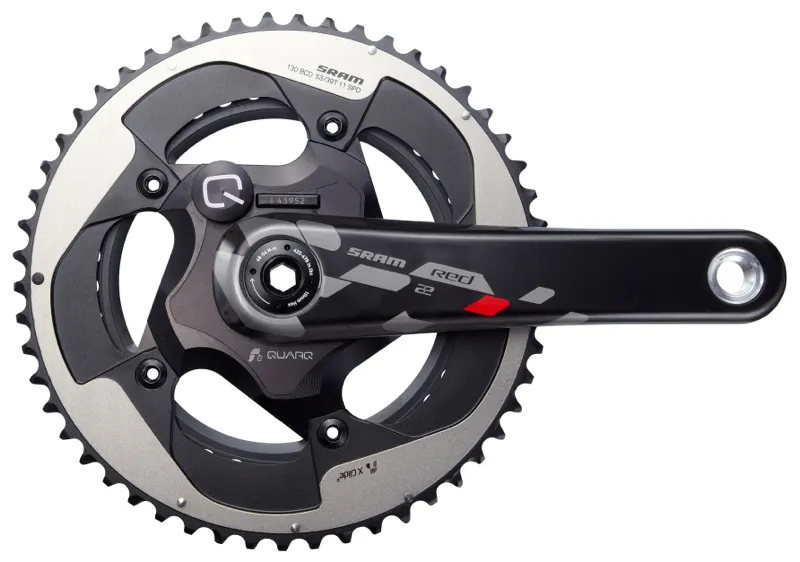
Beyond the weight/price story — 1,741g and $2,618 / £2,120 for the complete group — the big news with Red 22 is the wealth of options. Read our reviews on the Red 22 hydraulic rim brake and the Red 22 hydraulic disc brakes for details on SRAM’s new Hydro R options. Within the mechanical Red 22, you have multiple choices in cassettes, two derailleur cage lengths and crank lengths — all pretty standard stuff for modern groups. But you also have the choice of standard or integrated power-meter cranks, something Shimano and Campagnolo cannot claim.
The Red Quarq 22 Power Meter comes in GXP and BB30 options. For an additional $1,500/£1,220 (and 169g), you can add wattage measurements to your bike in a neatly integrated package. The spider-based Quarq system works with any cycling computer that has ANT+ capability, including all the Garmin GPS units.
We have ridden Quarq power meters on a number of bikes, and the technology works very well, delivering consistent data with virtually no maintenance or fuss. The system does require that you affix a magnet to your frame, however. The latest Cervélo RCA frameset features an integrated magnet beneath the surface layer — but that frameset is also $10,000. Perhaps other frame makers will follow suit and integrate power-meter magnets on bikes for the rest of us.
In any event, the magnet is required to trip a reed switch, calculating cadence but also signaling the start of power measurement for the system. Once you’re pedaling and the Quarq is sending data to your heat unit of choice (or a smart phone with an ANT+ dongle), the measurements are accurate to within a claimed +/- 1.5 %. But there is a slight, split-second hesitation from when you first begin pedaling to when the data shows up on the computer, whether starting from a stop or just resuming pedaling after coasting. This is true of other power meters as well, but Quarq and Stages seem to be a fraction of a second slower than that of SRM, perhaps due to SRM making its own head unit.
Will a power meter make you faster? Not any more than a scale will make you lose weight. But quantifying your efforts can be valuable over the short and long term, whether you’re pacing yourself on a climb, testing for improvement or even measuring training load over the season with an eye on peaking for a particular event.
Compatibility, or lack thereof
SRAM insists that all components marked 22 are not compatible with 10-speed. We have not had the chance to test this, but given the how careful you have to be with the Yaw derailleur with dedicated chain rings, we would not recommend a mix-and-match.
Red 22 and Force 22 will place together well, SRAM says.
Bottom line: The best value road group
If you’re looking for electronic shifting, look elsewhere. For those interested in 11-speed mechanical at a lower price, consider Force 22, SRAM’s number-two group at $1,358 / £1,121 or Campagnolo Chorus. But amongst the Big Three’s top-end mechanical offerings - Shimano Dura-Ace 9000 and Campagnolo Super Record - we think SRAM has the best value road group on the market with Red 22. Note that the pricing is different in the UK than in US or in Europe, with Red 22 being relatively cheaper in the latter two.



